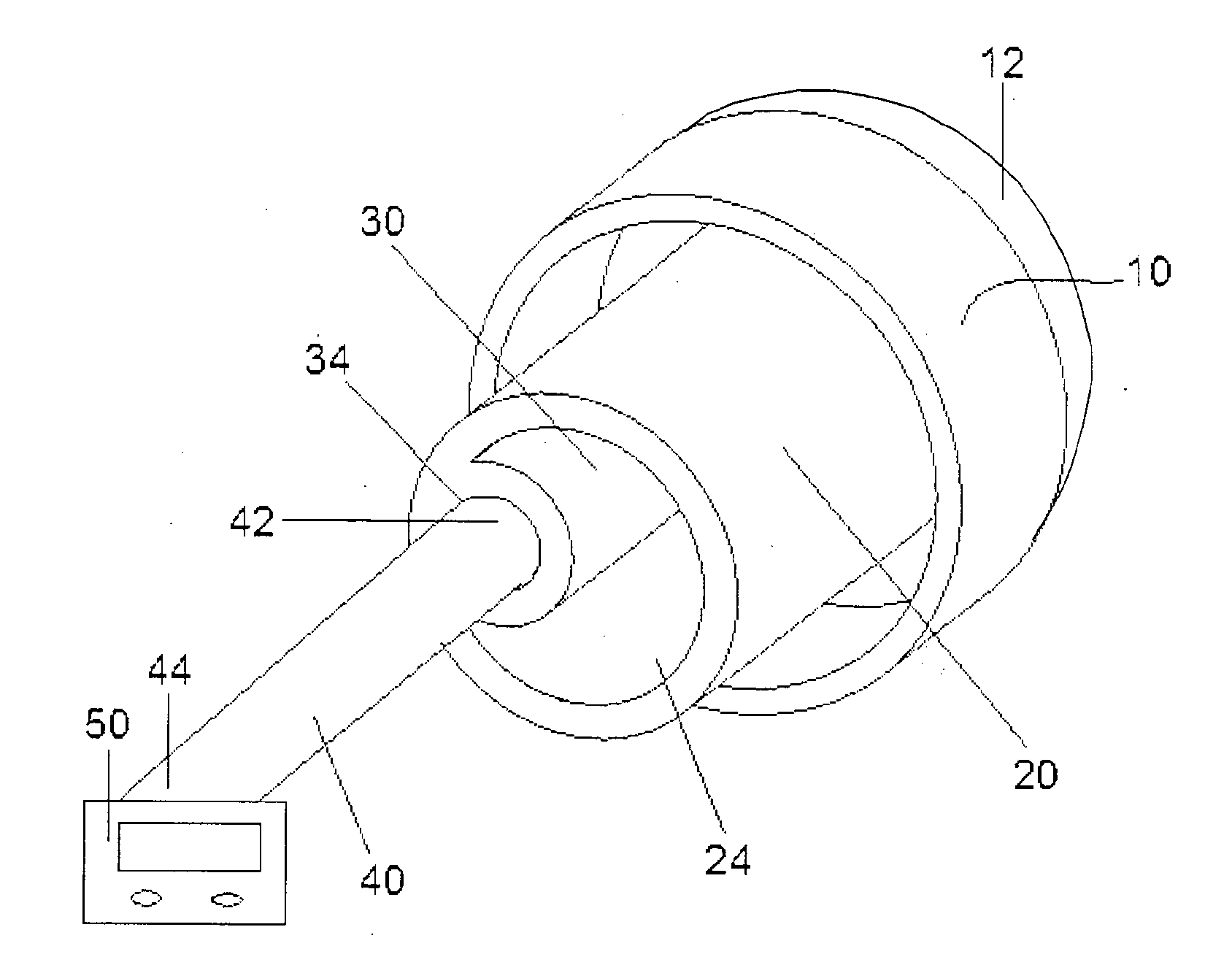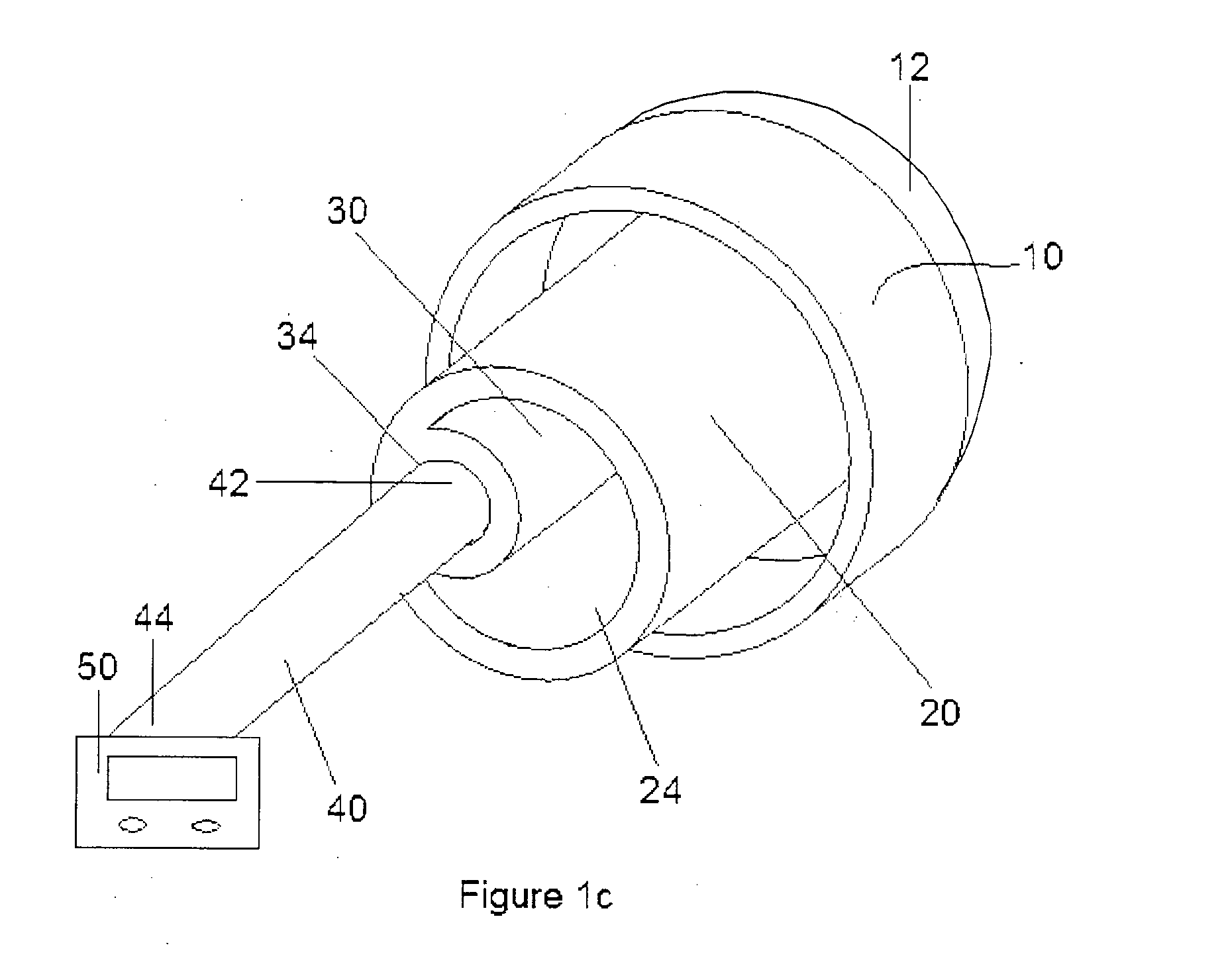Nasal cannula for carbon dioxide sampling
a carbon dioxide and cannula technology, applied in the field of nasal cannulas for carbon dioxide sampling, can solve the problem that none of the foregoing art solves the problem of how to monitor the carbon dioxide level, and achieve the effect of convenient insertion into the nostril
- Summary
- Abstract
- Description
- Claims
- Application Information
AI Technical Summary
Benefits of technology
Problems solved by technology
Method used
Image
Examples
first embodiment
[0018]Referring to FIGS. 1a, 1b and 1c, there is shown a device to facilitate carbon dioxide sampling in the exhalation breath of a person in this invention. A single nasal prong (10) insertable into a nostril of said person and allowing gas passage from the nostril into the nasal prong and having a first lumen (20), said first lumen allowing gas passage from the said nostril to the surrounding external air. The nasal prong (10) also having a second lumen (30), whereby said second lumen (30) is located within said first lumen (20). The first (20) and second (30) lumens are circular in cross section. An elongated hollow tube (40) is connected at a first end (42) to an end of said second lumen (34) that is further from the nostril and connectable at a second end (44) to a carbon dioxide monitoring device (50). The carbon dioxide monitoring device (50) detects the level of carbon dioxide in the portion of the person's exhalation that passes through the second lumen (30). The portion of...
second embodiment
[0019]Referring to FIGS. 2a, 2b and 2c, there is shown a device to facilitate carbon dioxide sampling in the exhalation breath of a person in this invention. A single nasal prong (10) insertable into a nostril of said person and allowing gas passage from the nostril into the nasal prong and having a first lumen (20), said first lumen allowing gas passage from the said nostril to the surrounding external air. The nasal prong (10) also having a second lumen (30), whereby said second lumen (30) is located within said first lumen (20). The first (20) and second (30) lumens are circular in cross section. An elongated hollow tube (40) is connected at a first end (42) to an end of said second lumen (34) that is further from the nostril and connectable at a second end (44) to a carbon dioxide monitoring device (50). The carbon dioxide monitoring device (50) detects the level of carbon dioxide in the portion of the person's exhalation that passes through the second lumen (30). The portion of...
third embodiment
[0020]Referring to FIGS. 3a and 3b, there is shown a device to facilitate carbon dioxide sampling in the exhalation breath of a person in this invention. A single nasal prong (10) insertable into a nostril of said person and allowing gas passage from the nostril into the nasal prong and having a first lumen (20), said first lumen allowing gas passage from the said nostril to the surrounding external air. The nasal prong (10) also having a second lumen (30), whereby said second lumen (30) is located within said first lumen (20). The first (20) and second (30) lumens are circular in cross section. An elongated hollow tube (40) is connected at a first end (42) to an end of said second lumen (34) that is further from the nostril and connectable at a second end (44) to a carbon dioxide monitoring device (50). The carbon dioxide monitoring device (50) detects the level of carbon dioxide in the portion of the person's exhalation that passes through the second lumen (30). The portion of the...
PUM
 Login to View More
Login to View More Abstract
Description
Claims
Application Information
 Login to View More
Login to View More - R&D
- Intellectual Property
- Life Sciences
- Materials
- Tech Scout
- Unparalleled Data Quality
- Higher Quality Content
- 60% Fewer Hallucinations
Browse by: Latest US Patents, China's latest patents, Technical Efficacy Thesaurus, Application Domain, Technology Topic, Popular Technical Reports.
© 2025 PatSnap. All rights reserved.Legal|Privacy policy|Modern Slavery Act Transparency Statement|Sitemap|About US| Contact US: help@patsnap.com



